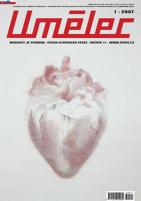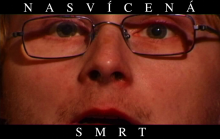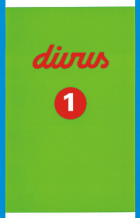|
A poem with this ending was once published by Markéta Othová in the forerunner to Umělec, a more warped and chaotic publication that she had helped to found and create. From this point of view, Markéta Othová is, in her mid- to -late thirties, a matador. At the same time, we can find an indication of how the graceful elegance of her photos is grounded in cunningly naive roots, how it is necessary to look for the difficult to describe, the reconciled as well as rebellious sincerity in her dreamy black and white world. And from the introductory quotation we can consider Othová’s works as poetry, a form of photographic haiku, formally intentionally delimited, yet stretching to infinity. Though this all sounds rather esoteric, Othová can be very deliberate. She is one of the few Czech artists who has her own distinctive signature style that can be recognized internationally, which is developed, damascened, and defined upon a formally perfected plan of uniformly and simply adjusted black and white blow-ups. Applying the same formal logic we could hyperbolically summarize the development of her photos: starting with free photos of some charming specific obscurity and the ghostliness of the black and white photographic method, Othová soon arrived at poetic juxtapositions of discordant found motifs, often with similarly absurd names. The Best of exhibition compiled in 2003 from selections of “nice” photos from previous installations, closed this chapter built on juxtaposition in a vicious way. For some artists such a specific handwriting can become a cage in the course of time. As such, it has been interesting to observe the direction her work is going after some of her more recent projects that have tended towards increasingly subtle shifts in a single motif. The first step aside was last year’s cycle L‘Ile de la tentation in which Othová used a scanner to capture a choice of her personal memorabilia. Color (!) pictures of smaller format showed a clear autobiographic approach, after years of hidden hints of a playfully explicit personal archive. Her recent exhibition Mluv s ní (Speak with Her) follows this “personal” line from the other side - more delicately, but more imploringly. Although it is again a series based on the subtle shifts with a single motif, it is a continuation of her Návrat, Utopia (Return, Utopia) only from a slightly formal point of view. Thirty-one photos taken during a short time during the 2005 Venice Biennale are presented as an untouched reportage sequence with small changes of a group picture. Othová’s works have always worked on the principle of photographic homeopathy: often a minute dose of difference and an incomprehensible obsession with the commonplace alters the whole way her photographs could be received. This approach is more visible in Mluv s ní: the closer she is to the photo method of a quick “shoot” the more detached she is from it. Paradoxically, the more photos she shows, albeit all nearly the same, the more meaningful the confusion of the whole concept. Another ambiguous element of the exhibition is the link to a celebrity (without the pejorative tone of the meaning). But here, as also Karel Císař noted in the text commenting on the exhibition, it was a metaphorical self-portrait. It was as if Othová, for the first time, took “only what there is and nothing more.” This is something very different for her than if it were stated by a photographer. Othova always gracefully refuted the classic photographic hierarchy of hunter and hunted (see introductory poem). But even here, it is not entirely unambiguous. Thus Othova was photographing herself photographing Björk, she photographed Björk being photographed, and she photographed Othova’s photographs Björk. Or could it be that Bjork was in fact photographing Othova? It is also interesting to note that the material photographed fits together with both the “standardized” size of Othová’s photos and the space of the Švestka gallery without preparation. Indeed, it is as if the process had been planned in advance, that the scene had been staged and tailored for a particular exhibition space. As is customary with Othová, the final installation definitely frames the fragility of the photographic work. This might function as a parody of a classic photographic installation in which the given space is filled evenly and rhythmically. In the oversized formats and with minimum changes of scene, the light absurdity of an installation concept reaches its peak at a place in the gallery where one of the photographs has been almost sado-masochistically installed right behind the heating tubes, when it is no longer clear if we are encountering photographs, placards or if it is just imagination permeated into the walls. “With a bit of exaggeration, we might speak of a baroque composition,” writes the gallery owner Jiří Švestka in the press release of the formal development of the photographed spectacle (something not unlike the stations of the cross, as another artist represented by the gallery mentioned.) The ceremonial significance of the whole cycle is exponential, starting as a narration about divination via photography (and also about the emptiness of such divination). In connection with older works by Othová, the cycle is also a story about a new-found courage to photograph “thy neighbor,” about a newly discovered obtrusiveness and embarrassment. Here we can speak about more than a photographic work or installation but--and here is the surprise—about the first performance of Markéta Othová.


Recommended articles

|
|
There’s 130 kilos of fat, muscles, brain & raw power on the Serbian contemporary art scene, all molded together into a 175-cm tall, 44-year-old body. It’s owner is known by a countless number of different names, including Bamboo, Mexican, Groom, Big Pain in the Ass, but most of all he’s known as MICROBE!… Hero of the losers, fighter for the rights of the dispossessed, folk artist, entertainer…
|

|
|
Why political intellectuals, do you incline towards the proletariat? In commiseration for what? I realize that a proletarian would hate you, you have no hatred because you are bourgeois, privileged, smooth-skinned types, but also because you dare not say that the only important thing there is to say, that one can enjoy swallowing the shit of capital, its materials, its metal bars, its polystyrene…
|

|
|
Goff & Rosenthal gallery, Berlin, November 18 - December 30, 2006
Society permanently renegotiates the definition of drugs and our relationship towards them. In his forty-five minute found-footage film The Conquest of Happiness, produced in 2005, Oliver Pietsch, a Berlin-based video artist, demonstrates which drugs society can accommodate, which it cannot, and how the story of the drugs can be…
|

|
|
There is nothing that has not already been done in culture, squeezed or pulled inside out, blown to dust. Classical culture today is made by scum. Those working in the fine arts who make paintings are called artists. Otherwise in the backwaters and marshlands the rest of the artists are lost in search of new and ever surprising methods. They must be earthbound, casual, political, managerial,…
|
|

































 New book by I.M.Jirous in English at our online bookshop.
New book by I.M.Jirous in English at our online bookshop.
Comments
There are currently no comments.Add new comment